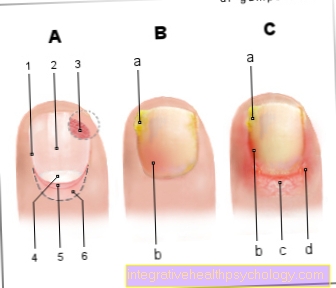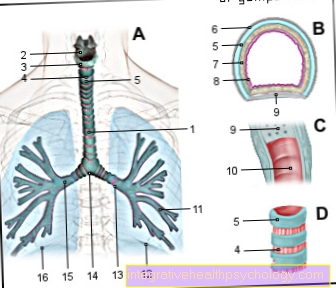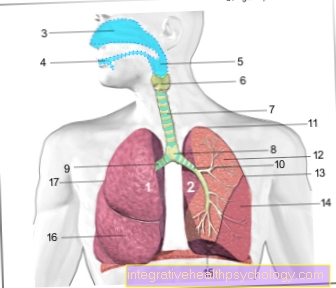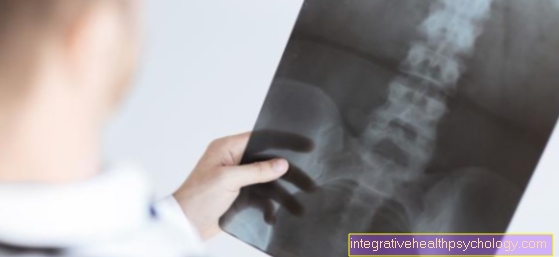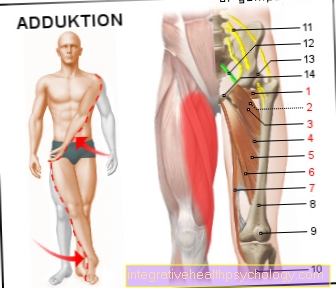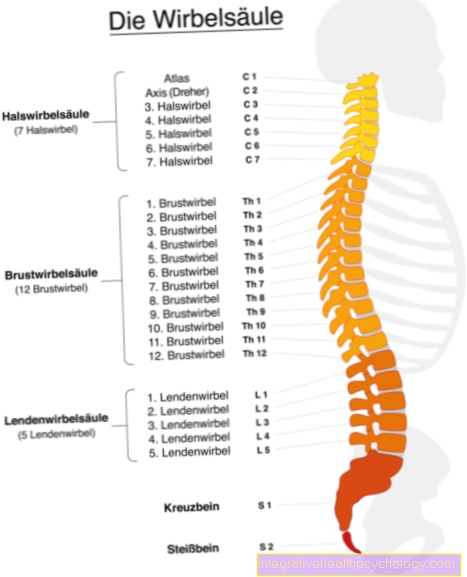Diagnosis of multiple sclerosis
General
The multiple sclerosis (MS) can express itself in many different ways. This is because the inflammation and breakdown of the myelin sheaths can affect various parts of the central nervous system. The first signs are therefore often different, which can often make an early diagnosis difficult.
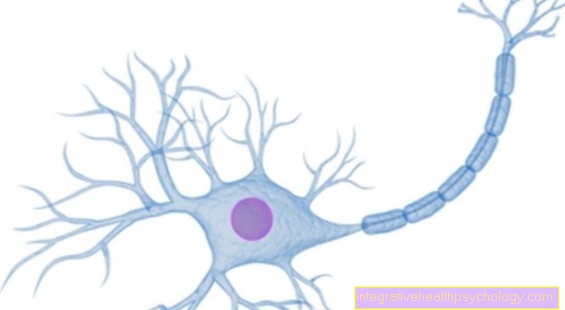
Medical history and physical examination
The diagnosis usually begins with the patient recognizing one or more of the early symptoms and seeing the family doctor. He must first collect the medical history through specific questions (anamnesis). It is important to find out when the symptoms began to be noticed and to give the patient any other early signs that they did not personally associate with the disease. It can happen that the patient has not been able to concentrate properly for a long time, but has attributed this to other causes. The possible occurrence of autoimmune diseases in the family must also be inquired about.
This is followed by a physical exam that checks various neurological aspects. These include eyesight, attention and concentration, which can be checked using various standardized tests. The skin's sensitivity and reflexes are also tested. These tests can detect or rule out other diseases with similar symptoms.
If the presence of multiple sclerosis is suspected, further examinations must be carried out. This includes a blood test, imaging procedures (e.g. magnetic resonance imaging (MRI)), measuring brain activity (electroencephalogram, EEG), measuring nerve conduction velocities using evoked potentials and possibly examining cerebral fluid (CSF puncture).
Read more on the topic: CSF diagnostics normal values.
Examination of the blood
If there is a suspicion multiple sclerosis a blood test should be done mainly to to rule out other diseases. There is no blood test that can be used to detect MS.
As part of the blood test, a complete blood count prepared. Liver and kidney values, as well as thyroid function, blood sugar, vitamin B12, rheumatoid factor, inflammation markers and other values that indicate certain diseases are determined. However, most values are usually unchanged in patients with multiple sclerosis.
MRI in MS / head
With the help of a Magnetic resonance imaging of the head images of the brain can be made on which a multiple sclerosis can be recognized.
The patient is told in advance Contrast media Gadolinium injected, which accumulates in the foci of inflammation so that these can be clearly seen on the pictures.
The MRI can diagnose MS as well as further diagnosis Course of the disease to be controlled. Based on the noticeable spread of the inflammation, the doctor can assess the type and need for therapy.
Since foci of inflammation can also occur in the cervical, thoracic and lumbar spine, the MRI should be performed according to the symptoms and the respective location.
In unclear cases, an MRI examination must be made of all regions. Since the MRI is a radiation-free examination, this can also be represented to this extent.
EEG
At a Electroencephalography (EEG), the brain waves are measured in order to assess the activity of the brain. For this purpose, electrodes are attached to the patient's head. Brain activity is often measured in response to certain external stimuli. One then speaks of so-called evoked potentials.
These particular nerve exams can measure how quickly a nerve is transmitting impulses. In the presence of multiple sclerosis, the nerve conduction speed is reduced because the insulating layer that surrounds the nerves is damaged.
The doctor examines through so-called evoked potentialshow long it takes the nerve to transmit an external stimulus to the brain.
Be on the scalp or on the arms and legs Electrodes attached to the incoming Measure impulses can. Then the doctor stimulates the patient using a certain external stimulus. There are different types of stimuli that can be tested. For one, these are visual stimuliwhich can be particularly important in the early stages of MS and which, if the times are increased, suggest damage to the optic nerve. Also somatosensory stimuli can be measured, these are stimuli that are triggered on the skin. Likewise can acoustic stimuli measured and may indicate damage to the auditory nerve.
Examination of the cerebral water / CSF diagnostics
Cerebral fluid (liquor) can be obtained through a Lumbar puncture obtained and shows an abnormal finding in about 95% of patients with multiple sclerosis.
For this purpose, a hollow needle is inserted between two vertebrae in the lumbar spine and something Taken from nerve water. This is then evaluated in a laboratory and examined for certain parameters. Typical of an MS finding is the increased occurrence of certain Protein bodies in the nerve water (monoclonal bands). Also Inflammatory cells are often found increased or increased.
Read more on this topic at: CSF diagnostics
Saving the diagnosis
There are defined criteria that must be met in order to be able to make a reliable diagnosis of multiple sclerosis. These criteria are called the McDonald criteria.
The diagnosis is confirmed if a spatial and temporal dispersion (dissemination) can be determined. This means that the foci of inflammation must appear in different places in the brain and new foci must appear as the disease progresses.
All symptoms should be considered and other conditions that may trigger the same symptoms should be considered. Although both the temporal and spatial spread of inflammation centers in the brain are typical signs of multiple sclerosis, other diseases can also be caused.
You might also be interested in: These symptoms will help you recognize inflammation of the nerves



